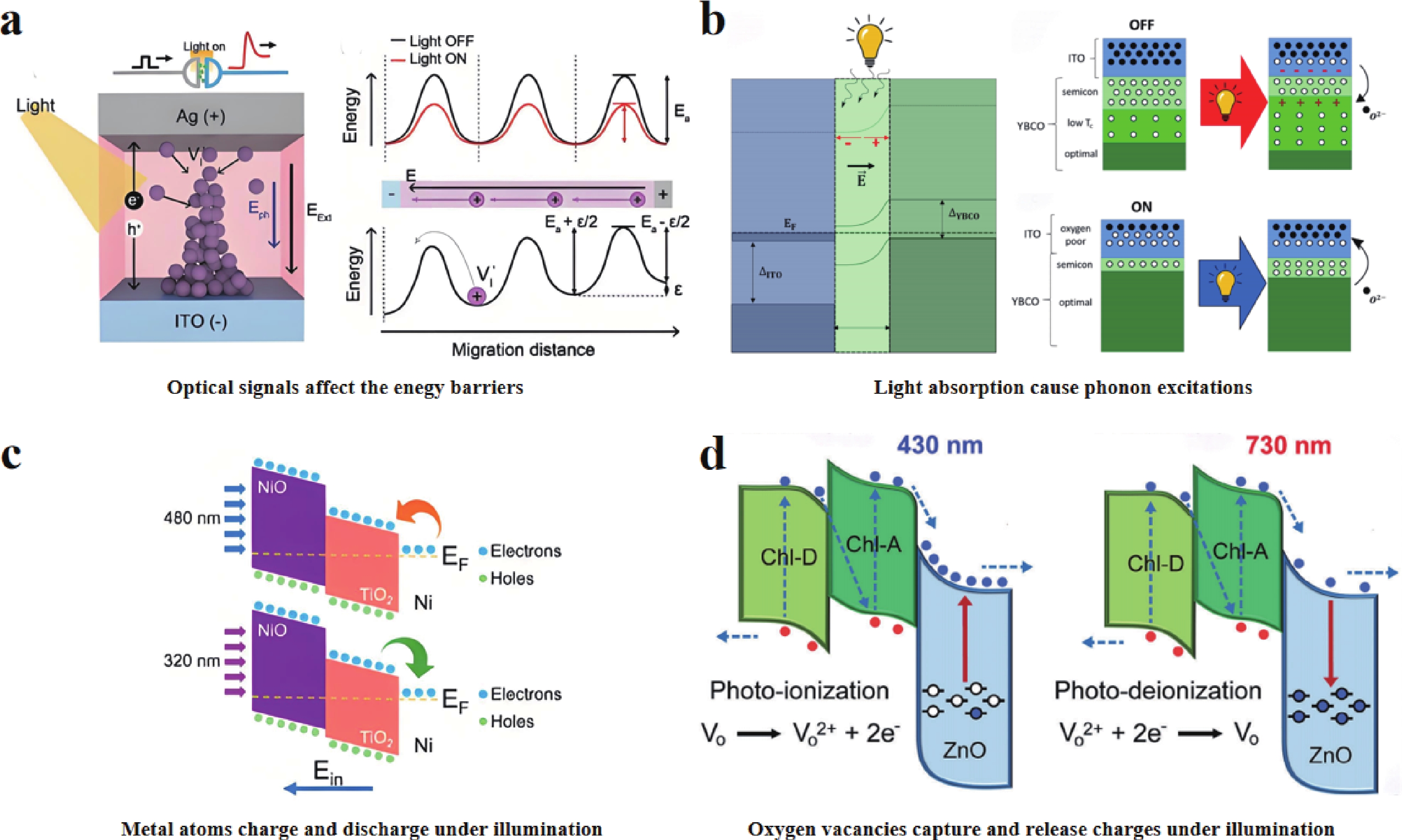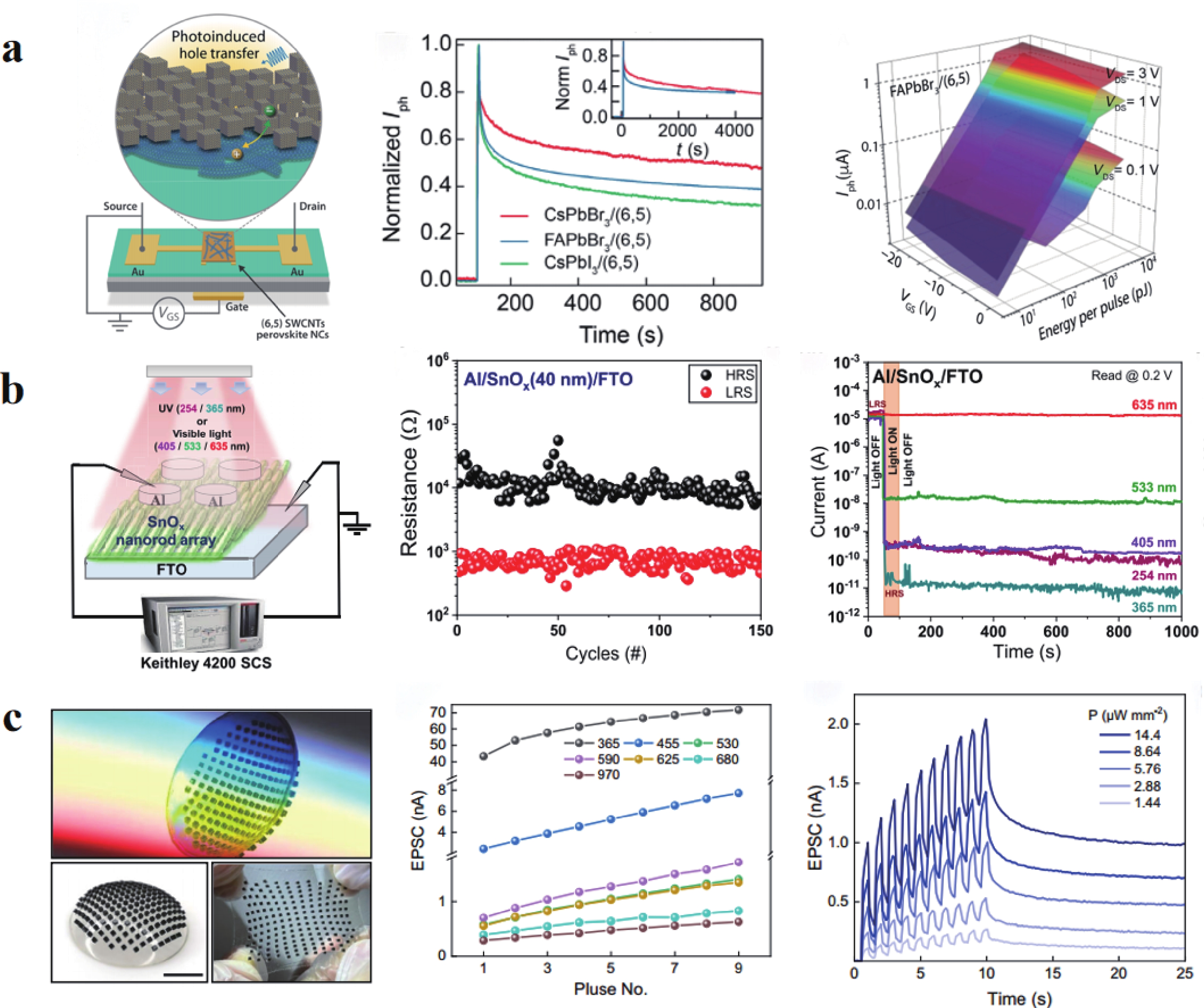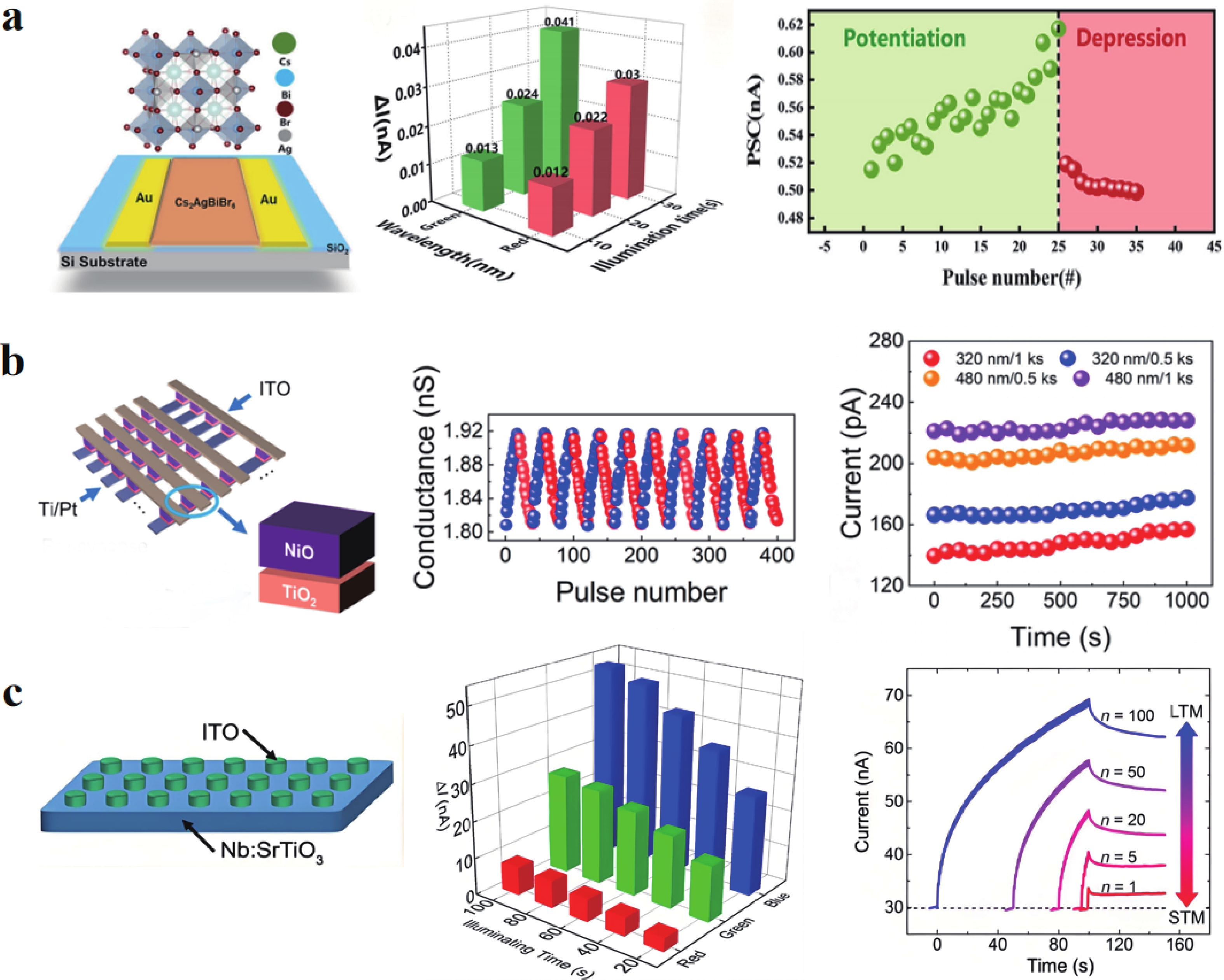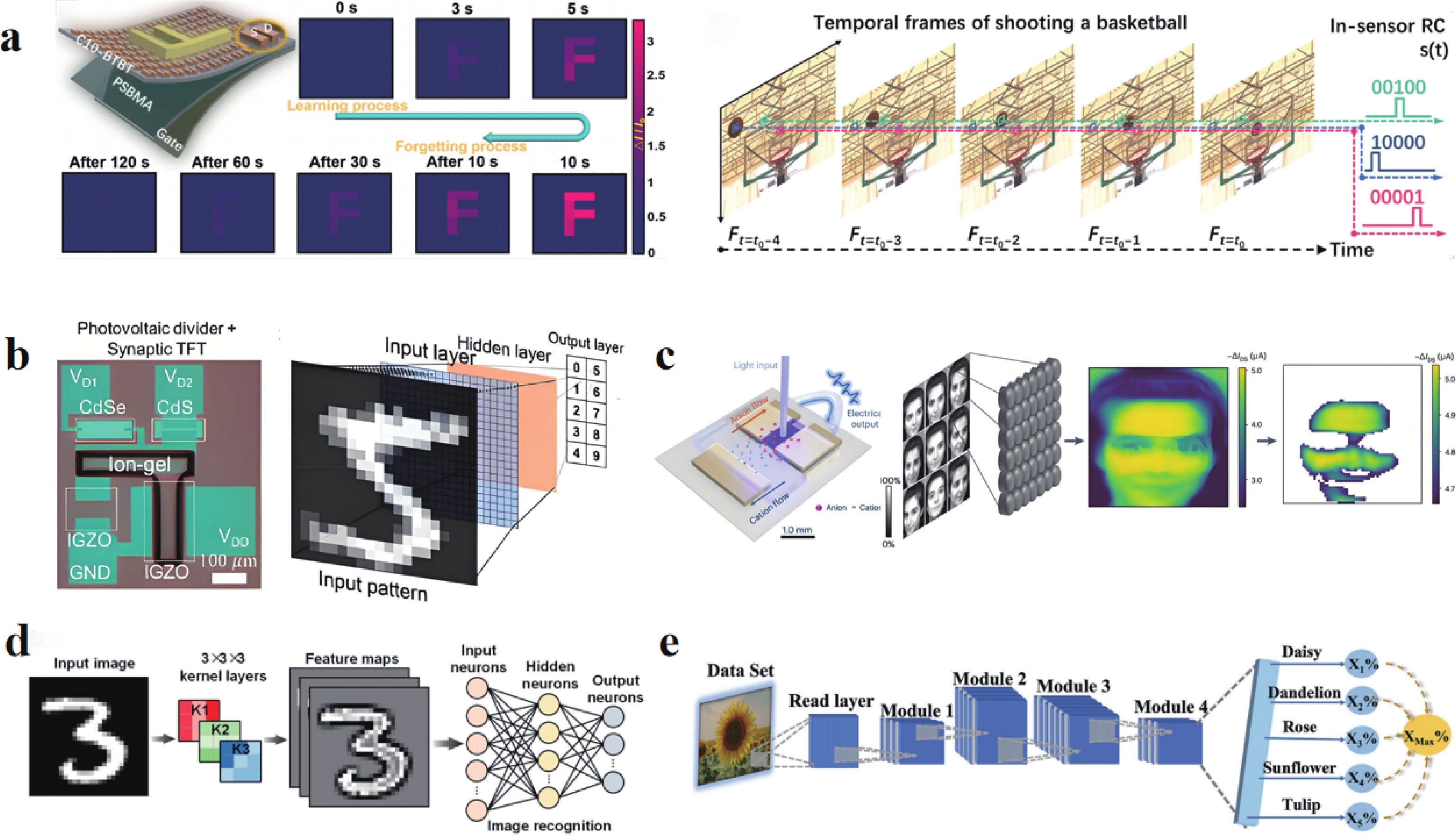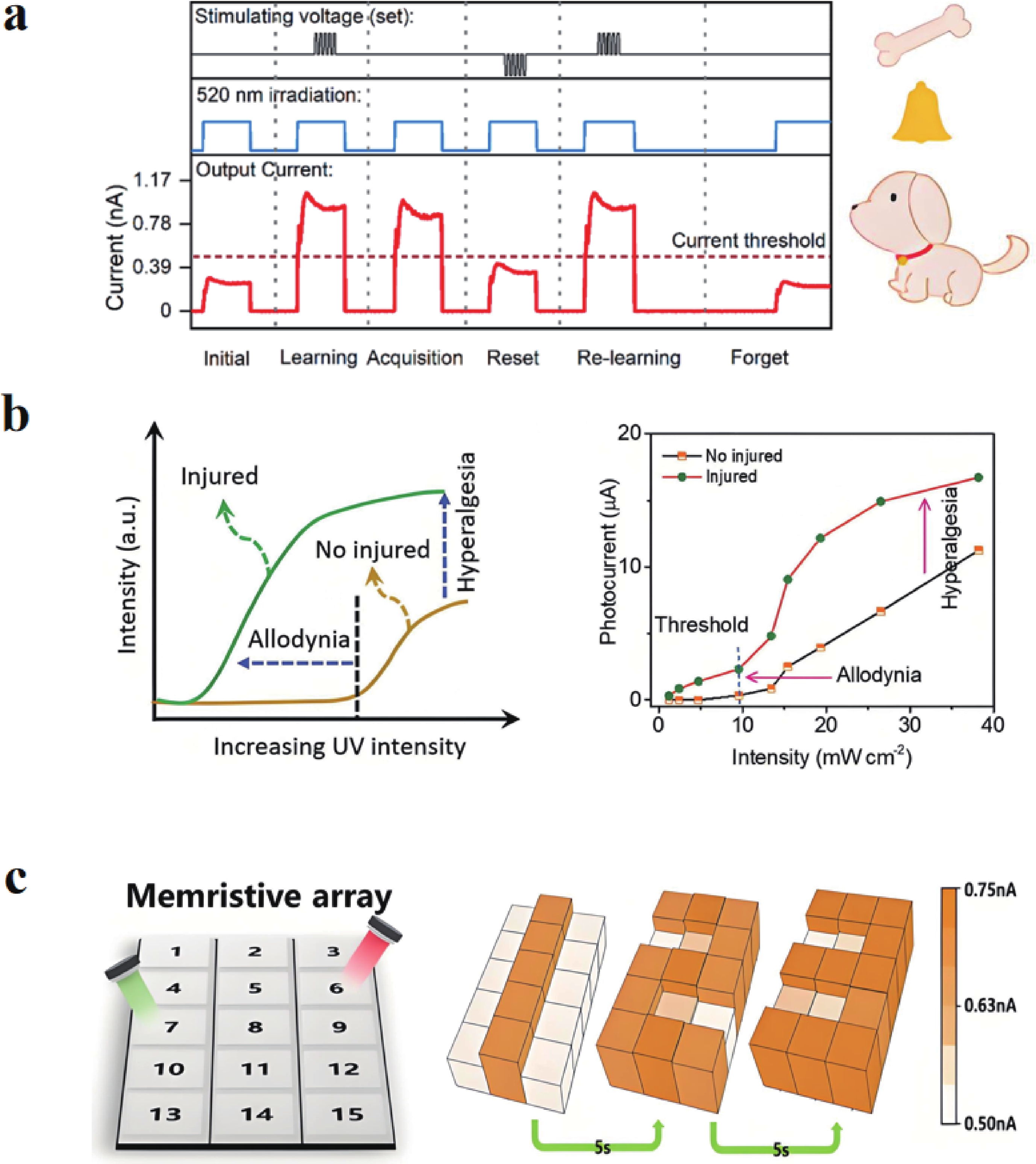| Citation: |
Xiaohan Meng, Runsheng Gao, Xiaojian Zhu, Run-Wei Li. Ion-modulation optoelectronic neuromorphic devices: mechanisms, characteristics, and applications[J]. Journal of Semiconductors, 2025, 46(2): 021402. doi: 10.1088/1674-4926/24100025
****
X H Meng, R S Gao, X J Zhu, and R W Li, Ion-modulation optoelectronic neuromorphic devices: mechanisms, characteristics, and applications[J]. J. Semicond., 2025, 46(2), 021402 doi: 10.1088/1674-4926/24100025
|
Ion-modulation optoelectronic neuromorphic devices: mechanisms, characteristics, and applications
DOI: 10.1088/1674-4926/24100025
CSTR: 32376.14.1674-4926.24100025
More Information-
Abstract
The traditional von Neumann architecture faces inherent limitations due to the separation of memory and computation, leading to high energy consumption, significant latency, and reduced operational efficiency. Neuromorphic computing, inspired by the architecture of the human brain, offers a promising alternative by integrating memory and computational functions, enabling parallel, high-speed, and energy-efficient information processing. Among various neuromorphic technologies, ion-modulated optoelectronic devices have garnered attention due to their excellent ionic tunability and the availability of multidimensional control strategies. This review provides a comprehensive overview of recent progress in ion-modulation optoelectronic neuromorphic devices. It elucidates the key mechanisms underlying ionic modulation of light fields, including ion migration dynamics and capture and release of charge through ions. Furthermore, the synthesis of active materials and the properties of these devices are analyzed in detail. The review also highlights the application of ion-modulation optoelectronic devices in artificial vision systems, neuromorphic computing, and other bionic fields. Finally, the existing challenges and future directions for the development of optoelectronic neuromorphic devices are discussed, providing critical insights for advancing this promising field. -
References
[1] von Neumann J. First draft of a report on the EDVAC. IEEE Ann Hist Comput, 1993, 15, 27 doi: 10.1109/85.238389[2] Hasegawa T, Terabe K, Tsuruoka T, et al. Atomic switch: Atom/ion movement controlled devices for beyond von-neumann computers. Adv Mater, 2012, 24, 252 doi: 10.1002/adma.201102597[3] Zidan M A, Strachan J P, Lu W D. The future of electronics based on memristive systems. Nat Electron, 2018, 1, 22 doi: 10.1038/s41928-017-0006-8[4] Salahuddin S, Ni K, Datta S. The era of hyper-scaling in electronics. Nat Electron, 2018, 1, 442 doi: 10.1038/s41928-018-0117-x[5] Xu W T, Cho H, Kim Y H, et al. Organometal halide perovskite artificial synapses. Adv Mater, 2016, 28, 5916 doi: 10.1002/adma.201506363[6] Gholipour B, Bastock P, Craig C, et al. Amorphous metal-sulphide microfibers enable photonic synapses for brain-like computing. Adv Opt Mater, 2015, 3, 635 doi: 10.1002/adom.201400472[7] Südhof T C. The cell biology of synapse formation. J Cell Biol, 2021, 220(7), e202103052 doi: 10.1083/jcb.202103052[8] Mead C. Neuromorphic electronic systems. Proc IEEE, 1990, 78, 1629 doi: 10.1109/5.58356[9] Merolla P A, Arthur J V, Alvarez-Icaza R, et al. A million spiking-neuron integrated circuit with a scalable communication network and interface. Science, 2014, 345, 668 doi: 10.1126/science.1254642[10] Peng P G, Qian H, Liu J J, et al. Bioinspired ionic control for energy and information flow. Int J Smart Nano Mater, 2024, 15, 198 doi: 10.1080/19475411.2024.2305393[11] Ma H Y, Chen H W, Wu M M, et al. Maximization of spatial charge density: An approach to ultrahigh energy density of capacitive charge storage. Angew Chem Int Ed, 2020, 59, 14541 doi: 10.1002/anie.202005270[12] Sakhatskyi K, John R A, Guerrero A, et al. Assessing the drawbacks and benefits of ion migration in lead halide perovskites. ACS Energy Lett, 2022, 7, 3401 doi: 10.1021/acsenergylett.2c01663[13] Li Y S, Xiong Y, Zhai B X, et al. Ag-doped non-imperfection-enabled uniform memristive neuromorphic device based on van der Waals indium phosphorus sulfide. Sci Adv, 2024, 10, eadk9474 doi: 10.1126/sciadv.adk9474[14] Zhu X J, Li D, Liang X G, et al. Ionic modulation and ionic coupling effects in MoS2 devices for neuromorphic computing. Nat Mater, 2019, 18, 141 doi: 10.1038/s41563-018-0248-5[15] Yu F, Zhu L Q, Xiao H, et al. Restickable oxide neuromorphic transistors with spike-timing-dependent plasticity and Pavlovian associative learning activities. Adv Funct Mater, 2018, 28, 1804025 doi: 10.1002/adfm.201804025[16] Geng S, Fan S Q, Li H F, et al. An artificial neuromuscular system for bimodal human–machine interaction. Adv Funct Mater, 2023, 33, 2302345 doi: 10.1002/adfm.202302345[17] Jo S H, Chang T, Ebong I, et al. Nanoscale memristor device as synapse in neuromorphic systems. Nano Lett, 2010, 10, 1297 doi: 10.1021/nl904092h[18] Prezioso M, Merrikh-Bayat F, Hoskins B D, et al. Training and operation of an integrated neuromorphic network based on metal-oxide memristors. Nature, 2015, 521, 61 doi: 10.1038/nature14441[19] Ohno T, Hasegawa T, Tsuruoka T, et al. Short-term plasticity and long-term potentiation mimicked in single inorganic synapses. Nat Mater, 2011, 10, 591 doi: 10.1038/nmat3054[20] Wu J M, Lin X, Guo Y C, et al. Analog optical computing for artificial intelligence. Engineering, 2022, 10, 133 doi: 10.1016/j.eng.2021.06.021[21] Wu Y, Chen J, Wang Y, et al. Tbps wide-field parallel optical wireless communications based on a metasurface beam splitter. Nat Commun, 2024, 15, 7744 doi: 10.1038/s41467-024-52056-4[22] Fu T Z, Zhang J F, Sun R, et al. Optical neural networks: Progress and challenges. Light Sci Appl, 2024, 13, 263 doi: 10.1038/s41377-024-01590-3[23] Gotoh T, Tanaka K. Photoinduced surface deformations in ion-conducting Ag–As–S glasses. II. Anisotropic deformation produced by large light spots. J Appl Phys, 2001, 89, 4703 doi: 10.1063/1.1357472[24] Pissadakis S, Ikiades A, Hua P, et al. Photosensitivity of ion-exchanged Er-doped phosphate glass using 248nm excimer laser radiation. Opt Express, 2004, 12, 3131 doi: 10.1364/OPEX.12.003131[25] Kim Y, Choi J, Lee Y, et al. Femtosecond laser bonding of glasses and ion migration in the interface. Appl Phys A, 2010, 101, 147 doi: 10.1007/s00339-010-5948-x[26] Mou N I, Tabib-Azar M. Photoreduction of Ag+ in Ag/Ag2S/Au memristor. Appl Surf Sci, 2015, 340, 138 doi: 10.1016/j.apsusc.2015.02.038[27] Han W F, Tellez L A, Rangel M J Jr, et al. Integrated control of predatory hunting by the central nucleus of the amygdala. Cell, 2017, 168, 311 doi: 10.1016/j.cell.2016.12.027[28] Kramer R H, Mourot A, Adesnik H. Optogenetic pharmacology for control of native neuronal signaling proteins. Nat Neurosci, 2013, 16, 816 doi: 10.1038/nn.3424[29] Karl D. Optogenetics: 10 years of microbial opsins in neuroscience. Nat Neurosci, 2015, 18, 1213 doi: 10.1038/nn.4091[30] Leng K M, Guo Z Q, Chen J M, et al. PbS/CsPbBr3 heterojunction for broadband neuromorphic vision sensing. ACS Appl Mater Interfaces, 2024, 16, 7470 doi: 10.1021/acsami.3c17935[31] John R A, Yantara N, Ng Y F, et al. Ionotronic halide perovskite drift-diffusive synapses for low-power neuromorphic computation. Adv Mater, 2018, 30, 1805454 doi: 10.1002/adma.201805454[32] Xiao Z G, Huang J S. Energy-efficient hybrid perovskite memristors and synaptic devices. Adv Electron Mater, 2016, 2, 1600100 doi: 10.1002/aelm.201600100[33] Ma F M, Zhu Y B, Xu Z W, et al. Optoelectronic perovskite synapses for neuromorphic computing. Adv Funct Mater, 2020, 30, 1908901 doi: 10.1002/adfm.201908901[34] Yang X Y, Xiong Z Y, Chen Y J, et al. A self-powered artificial retina perception system for image preprocessing based on photovoltaic devices and memristive arrays. Nano Energy, 2020, 78, 105246 doi: 10.1016/j.nanoen.2020.105246[35] Li D W, Chen Y T, Ren H H, et al. An active-matrix synaptic phototransistor array for In-sensor spectral processing. Adv Sci, 2024, 11, 2406401 doi: 10.1002/advs.202406401[36] Yoon Y, Kim Y, Choi S, et al. Synaptic a-Si: H/a-Ga2O3 phototransistor inspired by the phototaxis behavior of organisms with all-optical and all-electrical stimulation modes. Nano Res, 2024, 17, 7631 doi: 10.1007/s12274-024-6754-7[37] He B, He G, Fu C, et al. Electrospun coaxial nanowire-based FETs with annular heterogeneous interface gain for intelligent functional electronics. Adv Funct Mater, 2024, 34, 2316375 doi: 10.1002/adfm.202316375[38] Liang K, Wang R, Huo B B, et al. Fully printed optoelectronic synaptic transistors based on quantum dot–metal oxide semiconductor heterojunctions. ACS Nano, 2022, 16, 8651 doi: 10.1021/acsnano.2c00439[39] Ham S, Choi S, Cho H, et al. Photonic organolead halide perovskite artificial synapse capable of accelerated learning at low power inspired by dopamine-facilitated synaptic activity. Adv Funct Mater, 2019, 29, 1806646 doi: 10.1002/adfm.201806646[40] Lu C, Meng J L, Song J R, et al. Self-rectifying all-optical modulated optoelectronic multistates memristor crossbar array for neuromorphic computing. Nano Lett, 2024, 24, 1667 doi: 10.1021/acs.nanolett.3c04358[41] Sun Q H, Guo Z C, Zhu X J, et al. Optogenetics-inspired manipulation of synaptic memory using all-optically controlled memristors. Nanoscale, 2023, 15, 10050 doi: 10.1039/D3NR00900A[42] Wang K L, Wu J C, Wang M, et al. A biodegradable, stretchable, healable, and self-powered optoelectronic synapse based on ionic gelatins for neuromorphic vision system. Small, 2024, 20, 2404566 doi: 10.1002/smll.202404566[43] Chen K, Hu H, Song I, et al. Organic optoelectronic synapse based on photon-modulated electrochemical doping. Nat Photonics, 2023, 17, 629 doi: 10.1038/s41566-023-01232-x[44] Zhang J N, Feng X F, Mei L Y, et al. A MAPbBr3/PdSe2 Schottky junction-based optoelectronic sensor with self-powered and switchable photocurrents. Mater Des, 2023, 234, 112368 doi: 10.1016/j.matdes.2023.112368[45] Tian H S, Wang C, Chen Y W, et al. Optically modulated ionic conductivity in a hydrogel for emulating synaptic functions. Sci Adv, 2023, 9, eadd6950 doi: 10.1126/sciadv.add6950[46] Pan X, Jin T Y, Gao J, et al. Stimuli-enabled artificial synapses for neuromorphic perception: Progress and perspectives. Small, 2020, 16, 2001504 doi: 10.1002/smll.202001504[47] Wang Z R, Joshi S, Savel’ev S E, et al. Memristors with diffusive dynamics as synaptic emulators for neuromorphic computing. Nat Mater, 2017, 16, 101 doi: 10.1038/nmat4756[48] Shi Y Y, Liang X H, Yuan B, et al. Electronic synapses made of layered two-dimensional materials. Nat Electron, 2018, 1, 458 doi: 10.1038/s41928-018-0118-9[49] Zhu J D, Yang Y C, Jia R D, et al. Ion gated synaptic transistors based on 2D van der waals crystals with tunable diffusive dynamics. Adv Mater, 2018, 30, 1800195 doi: 10.1002/adma.201800195[50] Liu Y T, Ievlev A V, Borodinov N, et al. Direct observation of photoinduced ion migration in lead halide perovskites. Adv Funct Mater, 2021, 31, 2008777 doi: 10.1002/adfm.202008777[51] Yadav D, Gora S, Kumar A, et al. Probing the photo-activated switching dynamics of halide perovskite memristors. ACS Appl Electron Mater, 2023, 5, 3765 doi: 10.1021/acsaelm.3c00483[52] El Hage R, Humbert V, Rouco V, et al. Bimodal ionic photomemristor based on a high-temperature oxide superconductor/semiconductor junction. Nat Commun, 2023, 14, 3010 doi: 10.1038/s41467-023-38608-0[53] Jiang J, Shan X Y, Xu J Q, et al. Retina-like chlorophyll heterojunction-based optoelectronic memristor with all-optically modulated synaptic plasticity enabling neuromorphic edge detection. Adv Funct Mater, 2024, 2409677 doi: 10.1002/adfm.202409677[54] Ghasemi M, Zhang L, Yun J H, et al. Dual-ion-diffusion induced degradation in lead-free Cs2AgBiBr6 double perovskite solar cells. Adv Funct Mater, 2020, 30, 2002342 doi: 10.1002/adfm.202002342[55] Moia D. More ions in, less power out. Nat Energy, 2024, 9, 633 doi: 10.1038/s41560-024-01534-6[56] McGovern L, Grimaldi G, Futscher M H, et al. Reduced barrier for ion migration in mixed-halide perovskites. ACS Appl Energy Mater, 2021, 4, 13431 doi: 10.1021/acsaem.1c03095[57] Wang J, Wang D, Song Z Y, et al. Efficient solar energy conversion via bionic sunlight-driven ion transport boosted by synergistic photo-electric/thermal effects. Energy Environ Sci, 2023, 16, 3146 doi: 10.1039/D3EE00720K[58] Zhu X J, Lu W D. Optogenetics-inspired tunable synaptic functions in memristors. ACS Nano, 2018, 12, 1242 doi: 10.1021/acsnano.7b07317[59] Yang J L, Hu X Y, Kong X, et al. Photo-induced ultrafast active ion transport through graphene oxide membranes. Nat Commun, 2019, 10, 1171 doi: 10.1038/s41467-019-09178-x[60] Lee J H, Schell W, Zhu X J, et al. Charge transition of oxygen vacancies during resistive switching in oxide-based RRAM. ACS Appl Mater Interfaces, 2019, 11, 11579 doi: 10.1021/acsami.8b18386[61] Hu L X, Yang J, Wang J R, et al. All-optically controlled memristor for optoelectronic neuromorphic computing. Adv Funct Mater, 2021, 31, 2005582 doi: 10.1002/adfm.202005582[62] Shan X Y, Zhao C Y, Wang X N, et al. Plasmonic optoelectronic memristor enabling fully light-modulated synaptic plasticity for neuromorphic vision. Adv Sci, 2022, 9, 2104632 doi: 10.1002/advs.202104632[63] Zhou F C, Zhou Z, Chen J W, et al. Optoelectronic resistive random access memory for neuromorphic vision sensors. Nat Nanotechnol, 2019, 14, 776 doi: 10.1038/s41565-019-0501-3[64] Cao Y X, Yin L, Zhao C, et al. Perovskite-based optoelectronic systems for neuromorphic computing. Nano Energy, 2024, 120, 109169 doi: 10.1016/j.nanoen.2023.109169[65] Tan H W, Liu G, Yang H L, et al. Light-gated memristor with integrated logic and memory functions. ACS Nano, 2017, 11, 11298 doi: 10.1021/acsnano.7b05762[66] Hao J, Kim Y H, Habisreutinger S N, et al. Low-energy room-temperature optical switching in mixed-dimensionality nanoscale perovskite heterojunctions. Sci Adv, 2021, 7, eabf1959 doi: 10.1126/sciadv.abf1959[67] Swathi S S P, Makkaramkott A, Subramanian A. Tin oxide nanorod array-based photonic memristors with multilevel resistance states driven by optoelectronic stimuli. ACS Appl Mater Interfaces, 2023, 15, 15676 doi: 10.1021/acsami.2c22362[68] Luo X, Chen C, He Z X, et al. A bionic self-driven retinomorphic eye with ionogel photosynaptic retina. Nat Commun, 2024, 15, 3086 doi: 10.1038/s41467-024-47374-6[69] Li Y T, Li J Z, Ren L, et al. Light-controlled reconfigurable optical synapse based on carbon nanotubes/2D perovskite heterostructure for image recognition. ACS Appl Mater Interfaces, 2022, 14, 28221 doi: 10.1021/acsami.2c05818[70] Tan H W, Liu G, Zhu X J, et al. An optoelectronic resistive switching memory with integrated demodulating and arithmetic functions. Adv Mater, 2015, 27, 2797 doi: 10.1002/adma.201500039[71] Guo L Q, Sun H X, Min L L, et al. Two-terminal perovskite optoelectronic synapse for rapid trained neuromorphic computation with high accuracy. Adv Mater, 2024, 36, 2402253 doi: 10.1002/adma.202402253[72] Vasilopoulou M, bin Mohd Yusoff A R, Chai Y, et al. Neuromorphic computing based on halide perovskites. Nat Electron, 2023, 6, 949 doi: 10.1038/s41928-023-01082-z[73] Eperon G E, Stranks S D, Menelaou C, et al. Formamidinium lead trihalide: A broadly tunable perovskite for efficient planar heterojunction solar cells. Energy Environ Sci, 2014, 7, 982 doi: 10.1039/c3ee43822h[74] Albero J, Asiri A M, García H. Influence of the composition of hybrid perovskites on their performance in solar cells. J Mater Chem A, 2016, 4, 4353 doi: 10.1039/C6TA00334F[75] Noh J H, Im S H, Heo J H, et al. Chemical management for colorful, efficient, and stable inorganic–organic hybrid nanostructured solar cells. Nano Lett, 2013, 13, 1764 doi: 10.1021/nl400349b[76] Das U, Sarkar P, Paul B, et al. Halide perovskite two-terminal analog memristor capable of photo-activated synaptic weight modulation for neuromorphic computing. Appl Phys Lett, 2021, 118, 182103 doi: 10.1063/5.0049161[77] Woo G, Lee D H, Heo Y, et al. Energy-band engineering by remote doping of self-assembled monolayers leads to high-performance IGZO/p-Si heterostructure photodetectors. Adv Mater, 2022, 34, 2107364 doi: 10.1002/adma.202107364[78] Chalabi H, Schoen D, Brongersma M L. Hot-electron photodetection with a plasmonic nanostripe antenna. Nano Lett, 2014, 14, 1374 doi: 10.1021/nl4044373[79] Malavekar D, Pujari S, Jang S, et al. Recent development on transition metal oxides-based core–shell structures for boosted energy density supercapacitors. Small, 2024, 20, 2312179 doi: 10.1002/smll.202312179[80] Sengupta B, Dong Q B, Khadka R, et al. Carbon-doped metal oxide interfacial nanofilms for ultrafast and precise separation of molecules. Science, 2023, 381, 1098 doi: 10.1126/science.adh2404[81] Yan C C, Li W Z, Liu Z Y, et al. Ionogels: Preparation, properties and applications. Adv Funct Mater, 2024, 34, 2314408 doi: 10.1002/adfm.202314408[82] Prasad K, Mondal D, Sharma M, et al. Stimuli responsive ion gels based on polysaccharides and other polymers prepared using ionic liquids and deep eutectic solvents. Carbohydr Polym, 2018, 180, 328 doi: 10.1016/j.carbpol.2017.10.020[83] Gao N W, Pan C F. Intelligent ion gels: Design, performance, and applications. SmartMat, 2024, 5, e1215 doi: 10.1002/smm2.1215[84] Gao S, Liu G, Yang H L, et al. An oxide Schottky junction artificial optoelectronic synapse. ACS Nano, 2019, 13, 2634 doi: 10.1021/acsnano.9b00340[85] Lim J, Kober-Czerny M, Lin Y H, et al. Long-range charge carrier mobility in metal halide perovskite thin-films and single crystals via transient photo-conductivity. Nat Commun, 2022, 13, 4201 doi: 10.1038/s41467-022-31569-w[86] Herz L M. Charge-carrier mobilities in metal halide perovskites: Fundamental mechanisms and limits. ACS Energy Lett, 2017, 2, 1539 doi: 10.1021/acsenergylett.7b00276[87] Pan L F, Dai L J, Burton O J, et al. High carrier mobility along the [111] orientation in Cu2O photoelectrodes. Nature, 2024, 628, 765 doi: 10.1038/s41586-024-07273-8[88] Guo Y, Ma L, Mao K K, et al. Eighteen functional monolayer metal oxides: Wide bandgap semiconductors with superior oxidation resistance and ultrahigh carrier mobility. Nanoscale Horiz, 2019, 4, 592 doi: 10.1039/C8NH00273H[89] Shi P, Xing R F, Wu Z F, et al. Solid-state optoelectronic synapse transistor using a LaF3 gate dielectric. Phys Status Solidi RRL, 2022, 16, 2200173 doi: 10.1002/pssr.202200173[90] Lee M, Lee W, Choi S, et al. Brain-inspired photonic neuromorphic devices using photodynamic amorphous oxide semiconductors and their persistent photoconductivity. Adv Mater, 2017, 29, 1700951 doi: 10.1002/adma.201700951[91] Wu X S, Shi S H, Liang B S, et al. Ultralow-power optoelectronic synaptic transistors based on polyzwitterion dielectrics for in-sensor reservoir computing. Sci Adv, 2024, 10, eadn4524 doi: 10.1126/sciadv.adn4524[92] Huang X, Li Q Y, Shi W, et al. Dual-mode learning of ambipolar synaptic phototransistor based on 2D perovskite/organic heterojunction for flexible color recognizable visual system. Small, 2021, 17, 2102820 doi: 10.1002/smll.202102820[93] Kwon S M, Kang S H, Cho S S, et al. Bidirectionally modulated synaptic plasticity with optically tunable ionic electrolyte transistors. ACS Appl Electron Mater, 2022, 4, 2629 doi: 10.1021/acsaelm.2c00289[94] Xiao Y, Li W B, Lin X K, et al. 2D MoTe2/MoS2−xOx van der waals heterostructure for bimodal neuromorphic optoelectronic computing. Adv Electron Mater, 2023, 9, 2300388 doi: 10.1002/aelm.202300388[95] Hu J, Jing M J, Huang Y T, et al. A photoelectrochemical retinomorphic synapse. Adv Mater, 2024, 36, 2405887 doi: 10.1002/adma.202405887[96] Lee M, Kim Y, Mo S H, et al. Optoelectronic synapse based on 2D electron gas in stoichiometry-controlled oxide heterostructures. Small, 2024, 20, 2309851 doi: 10.1002/smll.202309851[97] Meng J L, Wang T Y, Zhu H, et al. Integrated In-sensor computing optoelectronic device for environment-adaptable artificial retina perception application. Nano Lett, 2022, 22, 81 doi: 10.1021/acs.nanolett.1c03240[98] Quiroga R Q, Reddy L, Kreiman G, et al. Invariant visual representation by single neurons in the human brain. Nature, 2005, 435, 1102 doi: 10.1038/nature03687[99] Wang G Z, Wang R B, Kong W Z, et al. Simulation of retinal ganglion cell response using fast independent component analysis. Cogn Neurodyn, 2018, 12, 615 doi: 10.1007/s11571-018-9490-4[100] Wang H, Sun B, Ge S S, et al. On non-von Neumann flexible neuromorphic vision sensors. NPJ Flex Electron, 2024, 8, 28 doi: 10.1038/s41528-024-00313-3[101] Ding J H, Huang T J. Towards human-leveled vision systems. Sci China Technol Sci, 2024, 67, 2331 doi: 10.1007/s11431-024-2762-5[102] Wang Y R, Cai Y C, Wang F, et al. A three-dimensional neuromorphic photosensor array for nonvolatile In-sensor computing. Nano Lett, 2023, 23, 4524 doi: 10.1021/acs.nanolett.3c00899[103] Kumar M, Kim H S, Kim J. A highly transparent artificial photonic nociceptor. Adv Mater, 2019, 31, 1900021 doi: 10.1002/adma.201900021[104] Kunz L, Staresina B P, Reinacher P C, et al. Ripple-locked coactivity of stimulus-specific neurons and human associative memory. Nat Neurosci, 2024, 27, 587 doi: 10.1038/s41593-023-01550-x[105] Lee C W, Yoo C, Han S S, et al. Centimeter-scale tellurium oxide films for artificial optoelectronic synapses with broadband responsiveness and mechanical flexibility. ACS Nano, 2024, 18, 18635 doi: 10.1021/acsnano.4c04851[106] Jiang D L, Li J, Li L K, et al. Li-ion dual modulation in all-inorganic ZrLiO/InLiO aqueous solution-processed thin-film transistor for optoelectronic artificial synapse. J Phys D: Appl Phys, 2021, 54, 405104 doi: 10.1088/1361-6463/ac12f9[107] Yang X, Fang Y C, Yu Z Z, et al. Nonassociative learning implementation by a single memristor-based multi-terminal synaptic device. Nanoscale, 2016, 8, 18897 doi: 10.1039/C6NR04142F[108] Ghaffarzadeh K, Nathan A, Robertson J, et al. Instability in threshold voltage and subthreshold behavior in Hf–In–Zn–O thin film transistors induced by bias-and light-stress. Appl Phys Lett, 2010, 97, 113504 doi: 10.1063/1.3480547[109] Tan H, Ni Z Y, Peng W B, et al. Broadband optoelectronic synaptic devices based on silicon nanocrystals for neuromorphic computing. Nano Energy, 2018, 52, 422 doi: 10.1016/j.nanoen.2018.08.018 -
Proportional views





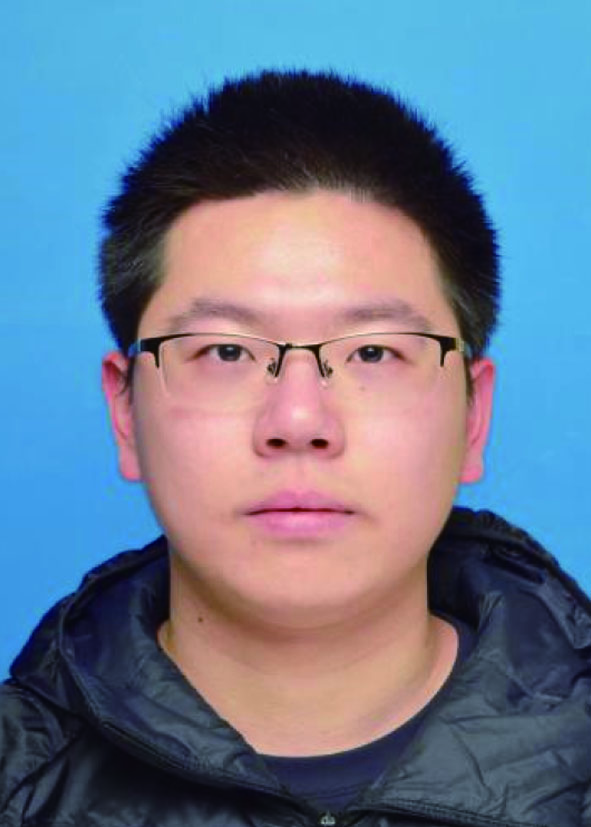 Xiaohan Meng got his BS degree from University of Science and Technology of China in 2022. Currently, he is a PhD student at ShanghaiTech University and under the supervision of Prof. Xiaojian Zhu in the Ningbo Institute of Materials Technology and Engineering, Chinese Academy of Sciences. His work focuses on memristors and quantum conductance.
Xiaohan Meng got his BS degree from University of Science and Technology of China in 2022. Currently, he is a PhD student at ShanghaiTech University and under the supervision of Prof. Xiaojian Zhu in the Ningbo Institute of Materials Technology and Engineering, Chinese Academy of Sciences. His work focuses on memristors and quantum conductance.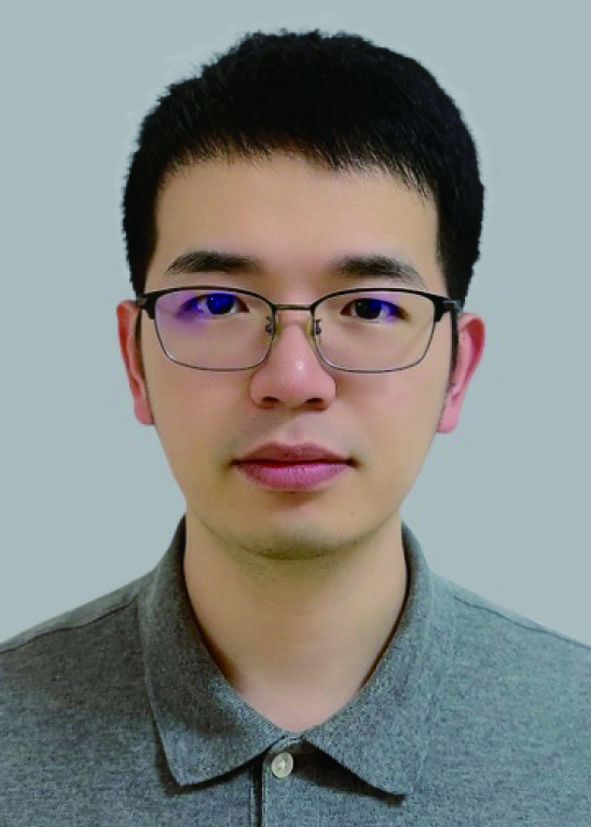 Runsheng Gao is currently an Associate Professor at the Ningbo Institute of Materials Technology and Engineering, Chinese Academy of Sciences. He received his PhD degree from the University of Tsukuba in 2020, Japan. Then, he served as a postdoctoral researcher at the National Institute for Materials Science (NIMS) in Japan. His primary research interests revolve around investigating ion migration and storage mechanisms in diverse nanoionic materials, focusing on the fabrication of related devices and exploration of application scenarios.
Runsheng Gao is currently an Associate Professor at the Ningbo Institute of Materials Technology and Engineering, Chinese Academy of Sciences. He received his PhD degree from the University of Tsukuba in 2020, Japan. Then, he served as a postdoctoral researcher at the National Institute for Materials Science (NIMS) in Japan. His primary research interests revolve around investigating ion migration and storage mechanisms in diverse nanoionic materials, focusing on the fabrication of related devices and exploration of application scenarios.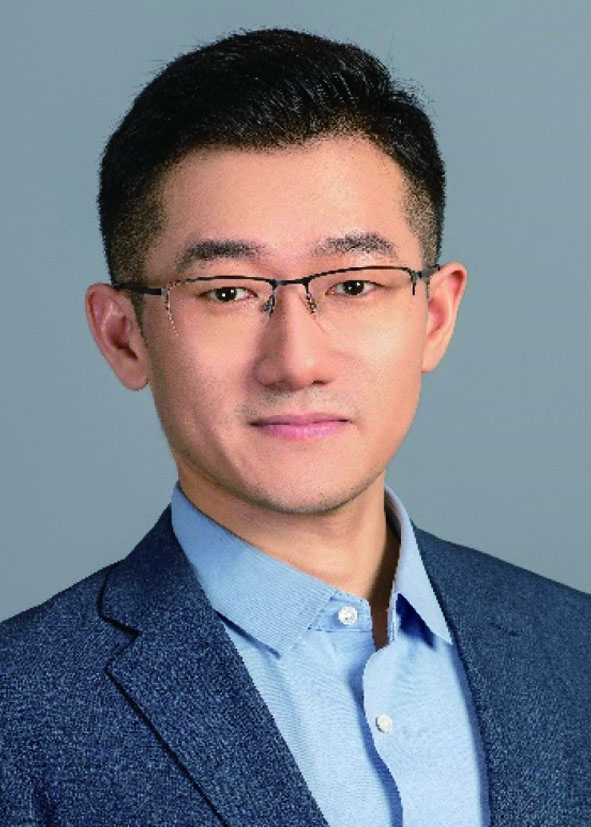 Xiaojian Zhu received his BS degree in physics from Soochow University, China, in 2009, and his PhD degree in materials science from the University of Chinese Academy of Sciences, China, in 2014. From 2015 to 2020, he worked as a post-doctoral research fellow at the Electrical Engineering and Computer Science Department, University of Michigan. He is currently a Full Professor at the Ningbo Institute of Materials Technology and Engineering, Chinese Academy of Sciences. His research interests include nanoionic materials and devices for neuromorphic computing.
Xiaojian Zhu received his BS degree in physics from Soochow University, China, in 2009, and his PhD degree in materials science from the University of Chinese Academy of Sciences, China, in 2014. From 2015 to 2020, he worked as a post-doctoral research fellow at the Electrical Engineering and Computer Science Department, University of Michigan. He is currently a Full Professor at the Ningbo Institute of Materials Technology and Engineering, Chinese Academy of Sciences. His research interests include nanoionic materials and devices for neuromorphic computing.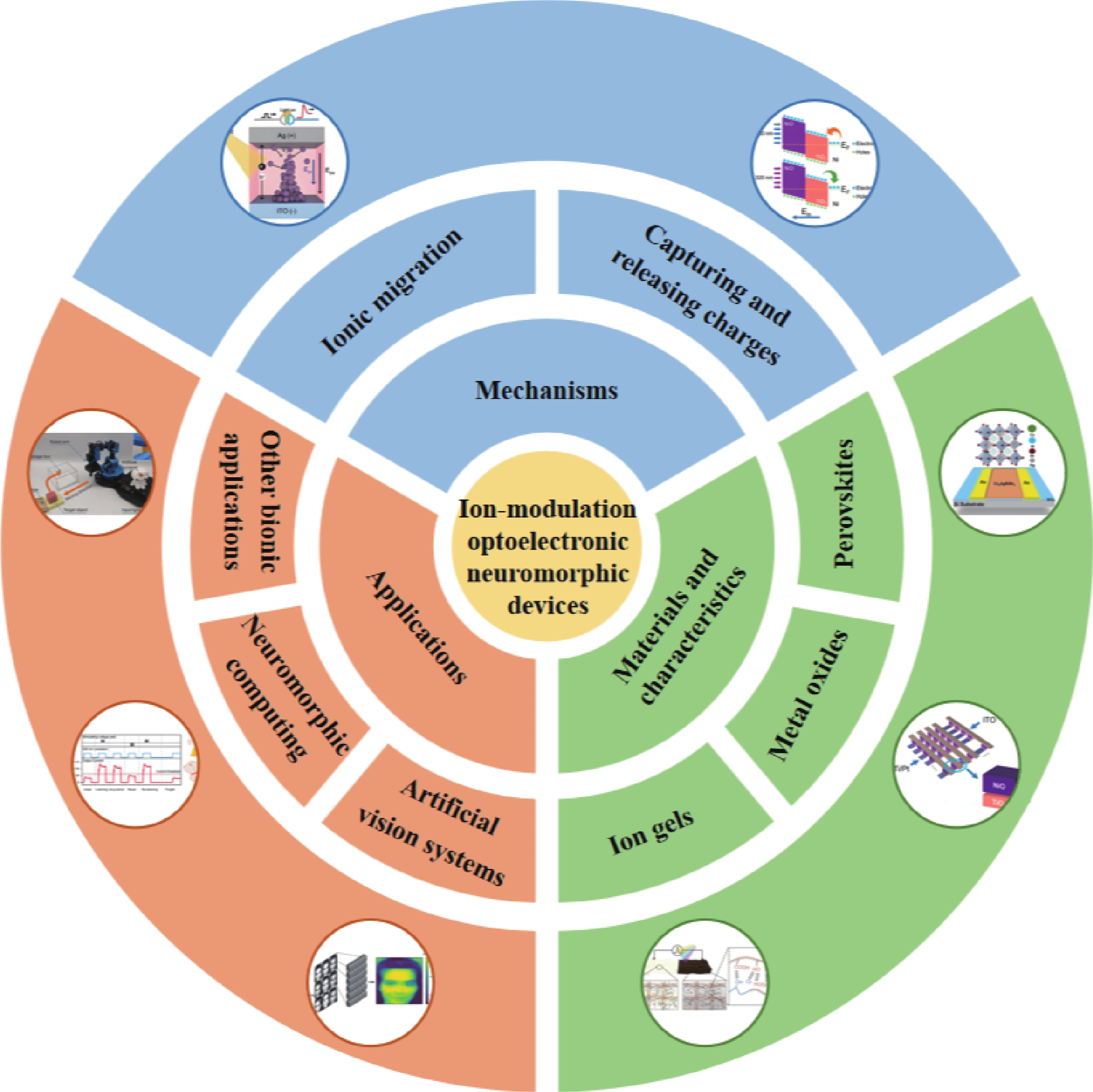
 DownLoad:
DownLoad:
